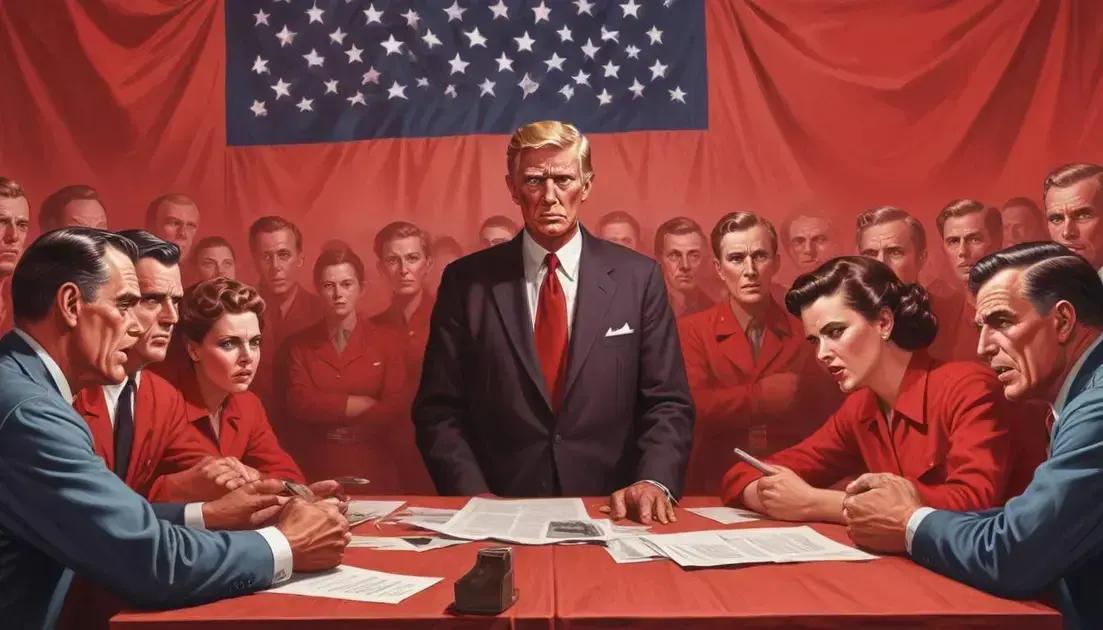
Life Behind the Iron Curtain
The Cold War’s legacy continues to influence today’s global politics, shaping military alliances like NATO and contributing to ongoing conflicts. Cultural expressions of dissent, such as art and literature, reflect the struggles of that era. Resistance figures emerged as symbols of courage, while international relations highlight the need for dialogue and cooperation. Understanding this complex history helps address current issues and fosters a more peaceful future.
Ever wondered what life behind the Iron Curtain was truly like? The stories of resistance and courage from this era offer a fascinating look into a world of oppression and resilience.
The impact of Soviet policies on daily life
Soviet policies had a big impact on daily life in Eastern Europe. People experienced strict government control and censorship. Daily tasks were often influenced by these rules.
Living Under Control
Keeping track of everything from work to play was essential. Rules covered where people could go and what they could say. This often led to fear and distrust among neighbors.
Censorship and Information
The government limited what people could read or watch. Newspapers and TV shows only showed what the state allowed. This meant that many people felt cut off from the world.
Surviving in Tough Times
Despite these challenges, many found ways to adapt. Communities came together to support each other. People shared stories in private gatherings to escape the harsh reality.
Work and Economy
Jobs were assigned and often lacked motivation. Many people worked but felt their efforts went unnoticed. Goods were often scarce, leading to long lines for basic items.
Education was also affected. Schools taught heavily biased material. Students learned to follow the party line rather than think independently.
Profiles of resistance figures
Resistance figures played a key role during Soviet control. They stood up against oppression, showing great courage. Many were ordinary people who became heroes.
Brave Faces of Resistance
One of the most famous resistance figures is Václav Havel. He used his voice as a playwright to fight for freedom. His words inspired many to challenge the regime.
Women in the Fight
Women also made significant contributions. For example, activists like Anna Politkovskaya bravely reported on the government’s wrongdoings. Their courage highlighted the fight for human rights.
Underground Movements
Many resistance figures worked in secret. They formed underground movements to share information. This helped keep hope alive among citizens who faced strict censorship.
Legacy of Their Actions
These brave individuals left a lasting impact. Their efforts laid the groundwork for future freedom movements. They remind us that even in dark times, people can strive for justice.
Cultural expressions of dissent
Cultural expressions of dissent were vital during the Soviet era. Art, music, and literature became forms of resistance. Many people used these channels to voice their struggles.
Art as Protest
Visual artists created powerful works that challenged the status quo. These pieces often featured dark themes, reflecting the pain many felt. Some artists even faced serious consequences for their work.
The Role of Music
Music also played a crucial role. Songs became anthems for freedom and change. Bands like Kino used their lyrics to express hope and frustration.
Literature of Resistance
Writers like Aleksandr Solzhenitsyn shared stories of life under oppression. Their books opened eyes to the reality of Soviet control. Many readers found comfort and courage in their words.
Impact on Society
These cultural expressions united people. They created a shared sense of identity and purpose. Through art and literature, many felt empowered to push back against the regime.
The role of international relations
International relations played a key role during the Cold War. Countries formed alliances to strengthen their positions. These relationships greatly affected life in Soviet-controlled nations.
Alliances and Tensions
The Soviet Union had many allies. Countries like Cuba and East Germany were part of its sphere. These ties often extended Soviet influence and deepened global tensions.
Impact of the West
Western nations, like the United States, reacted strongly to Soviet actions. Their responses included economic sanctions and political pressure. This created a climate of fear and uncertainty.
Human Rights Issues
International relations also highlighted human rights abuses. Organizations like Amnesty International raised awareness. Their efforts put pressure on the Soviet regime to change policies.
Global Solidarity Movements
Many groups around the world supported resistance efforts. They organized rallies and campaigns against the Soviet regime. This global solidarity inspired local movements in Eastern Europe.
Legacy of the Cold War today
The legacy of the Cold War affects us today in many ways. It shaped global politics and international relations. Many countries still feel the impact of those historic tensions.
Political Alliances
Some alliances formed during the Cold War still exist. NATO remains a key military alliance. It continues to influence security policies across Europe and North America.
Ongoing Conflicts
Many conflicts today can be traced back to Cold War divisions. Regions like Eastern Europe and Korea feel these effects. Old rivalries sometimes flare up, causing tension.
Culture and Society
The Cold War influenced culture, including films, books, and art. Many of these works address themes of conflict and freedom. They reflect the struggles faced during that time.
Lessons Learned
One major lesson is the need for dialogue. Today, countries recognize the importance of communication. Avoiding misunderstandings is crucial for global peace.
Conclusion
In conclusion, the legacy of the Cold War still plays a big role in our world today. It shaped how countries interact and created ongoing challenges in global politics. Understanding these past events helps us recognize the importance of communication and cooperation among nations.
As we move forward, it’s vital to learn from the lessons of the Cold War. By building on our shared history, we can work towards a more peaceful world. Each effort to promote dialogue and understanding can bridge gaps and reduce tensions. Remembering the past can guide us to a brighter future for everyone.


